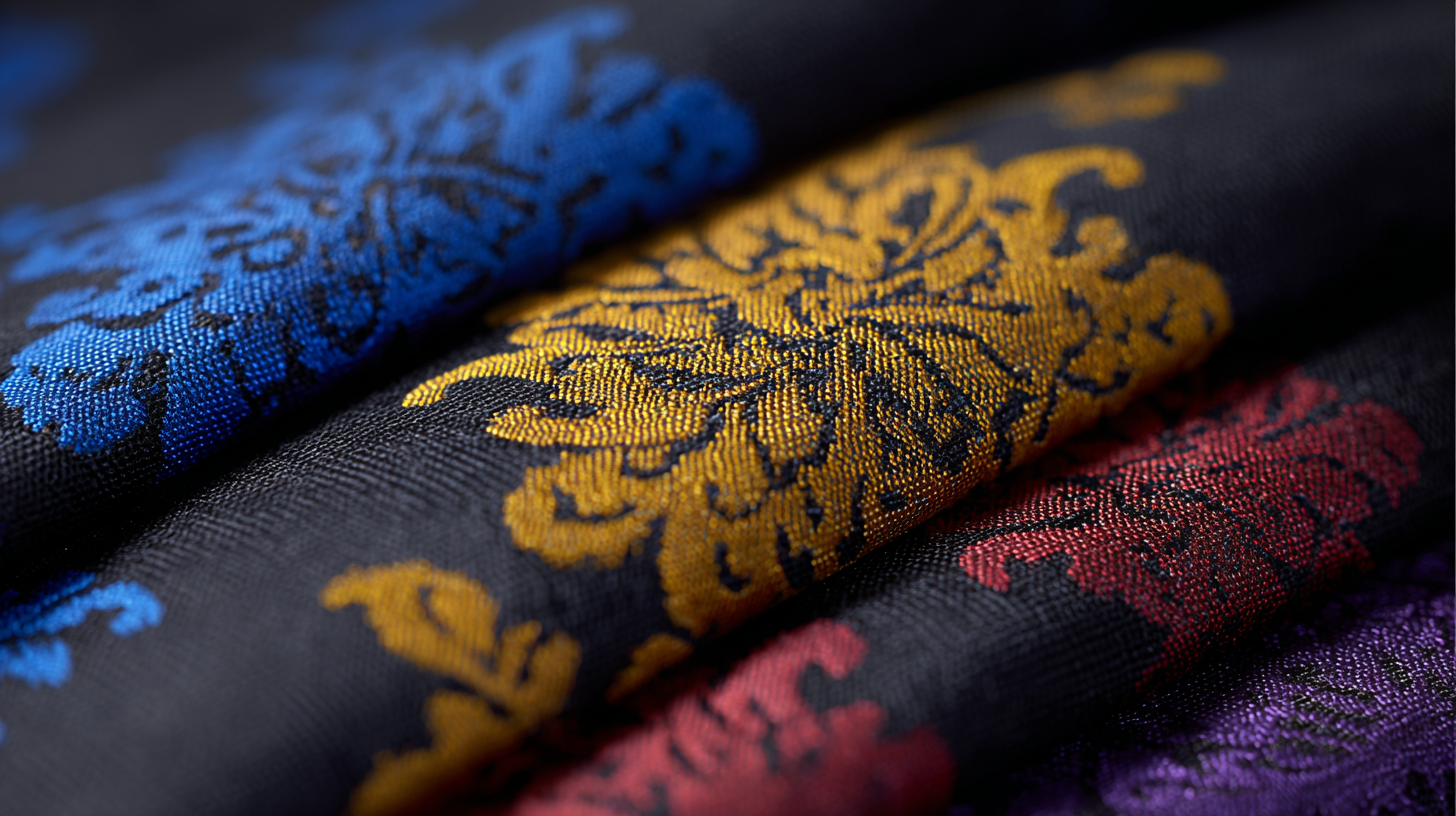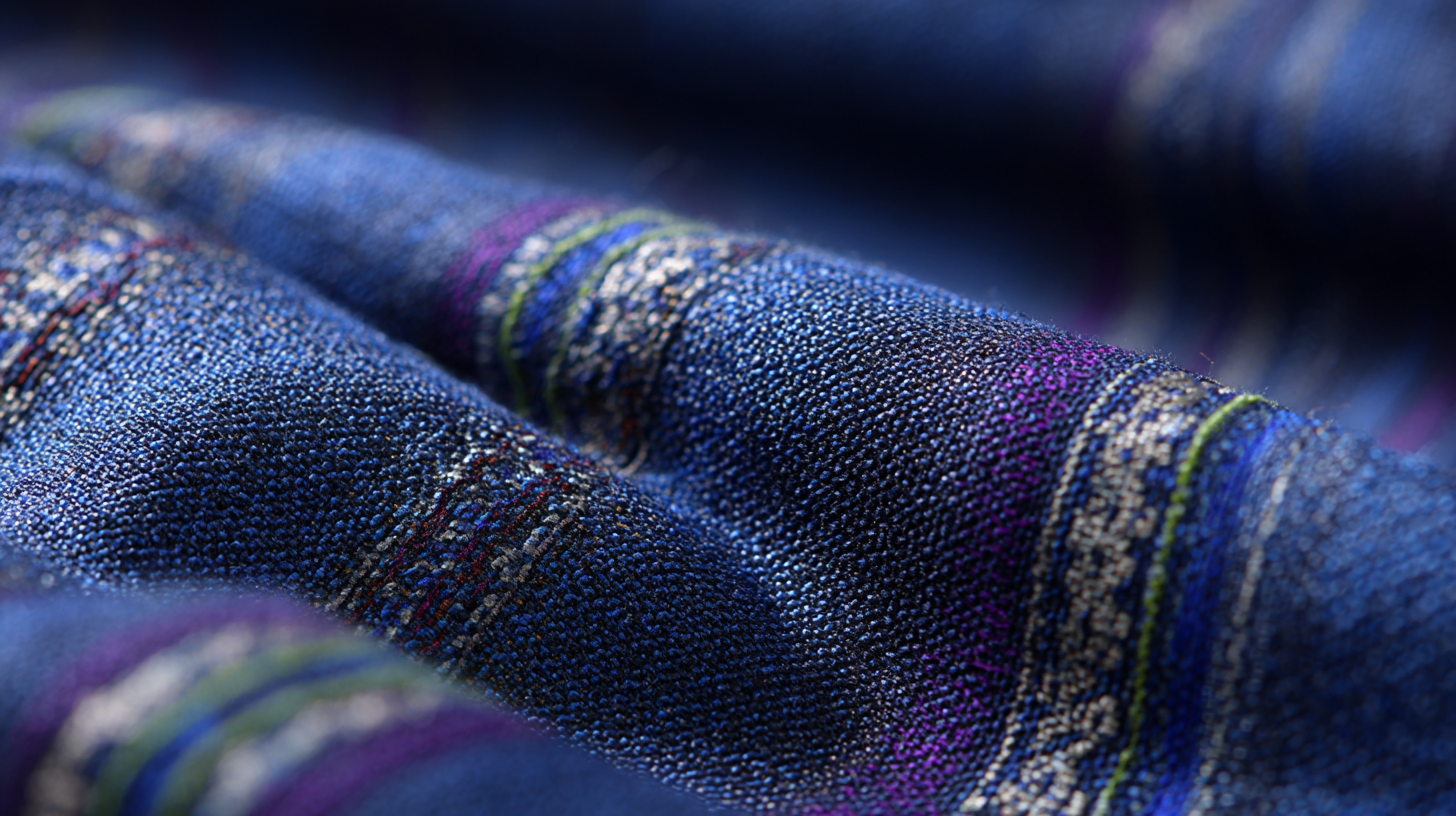When it comes to selecting the ideal textile for fashion and interior design, the nuances of fabric choice can greatly impact the overall aesthetic and functionality of the final product. One trending material in recent years is thin knitted jacquard fabric, known for its intricate patterns and lightweight properties. According to the Textile Outlook International report, the demand for jacquard fabrics is projected to grow by 4.5% annually through 2025, driven by the rising appetite for unique, high-quality textiles in both apparel and home furnishings. However, choosing the best thin knitted jacquard fabric can pose challenges, including understanding the different types available and their specific applications. This blog will explore five essential tips for navigating the selection process, ensuring that you find the perfect fabric that meets your design needs while also being mindful of the quality and durability that today’s consumers increasingly expect.

When exploring thin knitted jacquard fabric, it’s essential to understand its unique characteristics that set it apart from other textiles. Thin knitted jacquard is known for its intricate patterns woven directly into the fabric, allowing for a versatility that has become increasingly popular in fashion and upholstery. According to a report by the Textile World, jacquard fabrics, including knitted varieties, have seen a 15% increase in demand over the past three years, primarily due to their aesthetic appeal and functional benefits.
One of the standout characteristics of thin knitted jacquard fabric is its elasticity and drape. The knitting technique provides a stretch that enhances wearing comfort, making it suitable for a range of applications from stylish garments to functional home décor. Research from the National Textile Association indicates that knitted fabrics account for nearly 50% of the overall textile market, reflecting a significant consumer preference for the comfort and adaptability of knit materials. This adaptability is especially amplified in jacquard fabrics where patterns can be designed to create visual texture without compromising the fabric's lightweight nature.
Furthermore, the breathability of thin knitted jacquard adds to its allure, making it an ideal choice for seasonal wear. Fabrics that allow for air circulation while maintaining a stylish appearance have become essential as consumers increasingly prioritize comfort alongside aesthetics. Reports indicate that nearly 70% of consumers choose fabrics based on their comfort level, highlighting the importance of understanding material characteristics when selecting the right fabric for specific applications.

When selecting thin knitted jacquard fabric, identifying quality indicators is crucial to ensure your final product meets your expectations. One of the primary factors to consider is the thickness and feel of the fabric. High-quality jacquard should have a soft texture, allowing it to drape beautifully, while maintaining enough weight to resist transparency. Hold the fabric up to the light; a well-constructed jacquard should appear consistent in its weave without any irregularities.
Additionally, pay attention to the color and pattern clarity. A premium jacquard fabric showcases vibrant colors that remain true, even after multiple washes. Check for the integrity of the pattern—if it becomes distorted or fades easily, it’s a sign of inferior quality.
Lastly, look at the stitch density; a higher stitch count generally indicates a more durable fabric that can withstand wear and tear while retaining its original aesthetics. By keeping these quality indicators in mind, you can select a jacquard fabric that not only looks stunning but also performs well over time.
When selecting thin knitted jacquard fabric for your projects, understanding fabric elasticity and stretch is paramount. Elasticity refers to a fabric's ability to return to its original shape after being stretched, while stretch indicates the extent to which it can be elongated. According to a report by the Textile Research Journal, fabrics with high elasticity can maintain their shape better after repeated use, making them ideal for garments that require a snug fit, such as activewear or fitted dresses.
In addition, stretch properties are typically quantified in terms of percentage; for instance, fabrics that exhibit a stretch of 10% or more are often deemed suitable for comfortable wear, as they provide the necessary freedom of movement. The International Journal of Clothing Science and Technology highlights that many modern jacquard fabrics incorporate elastane, enhancing their stretchability. When assessing potential fabric options, consider conducting simple stretch tests and reviewing the manufacturer's specifications to ensure the material meets your project's functional demands.
 When it comes to selecting the perfect thin knitted jacquard fabric, the choice of pattern and color plays a crucial role in enhancing your design. Patterns can significantly influence the aesthetic appeal of your garment or accessory, making it essential to choose one that aligns with your vision. Consider the themes and styles you want to evoke; geometric patterns offer a modern, edgy vibe, while floral designs can bring a touch of femininity and romance. Additionally, the scale of the pattern matters; larger motifs can act as statement pieces, while smaller patterns can add subtle interest without overwhelming the overall design.
When it comes to selecting the perfect thin knitted jacquard fabric, the choice of pattern and color plays a crucial role in enhancing your design. Patterns can significantly influence the aesthetic appeal of your garment or accessory, making it essential to choose one that aligns with your vision. Consider the themes and styles you want to evoke; geometric patterns offer a modern, edgy vibe, while floral designs can bring a touch of femininity and romance. Additionally, the scale of the pattern matters; larger motifs can act as statement pieces, while smaller patterns can add subtle interest without overwhelming the overall design.
Color selection is equally important, as it can alter the mood and perception of your fabric. When picking colors, think about the emotions you wish to convey and how they complement one another. Monochromatic schemes can create a sleek and sophisticated look, while contrasting colors can add dynamism and attention-grabbing flair. Don't shy away from experimenting with color combinations that reflect trends or personal preferences. Ultimately, the right mix of pattern and color can elevate your project, making it not only visually appealing but also a true representation of your creative vision.
When selecting thin knitted jacquard fabric, it is essential to evaluate care instructions and durability to ensure longevity and ease of maintenance. Since jacquard fabrics often feature intricate patterns, understanding the specific washing and drying methods recommended by the manufacturer can prevent damage. Look for fabrics that are machine washable and resistant to shrinking, which will make your life easier and help maintain the fabric's appearance.
Another critical tip is to assess the durability of the fabric. Thin fabrics can be delicate, so consider the fiber content; natural fibers like cotton or wool tend to be more robust compared to synthetic options. Check for reviews or ratings that speak to the longevity of the fabric under normal wear and tear. Additionally, choose fabrics that are treated for stain resistance to keep them looking fresh longer, particularly in high-traffic areas or for items like clothing and home textiles.
| Fabric Type | Care Instructions | Durability Rating (Years) | Stretchability (%) |
|---|---|---|---|
| Cotton Blend | Machine wash cold, tumble dry low | 5 - 7 | 15% |
| Polyester | Machine wash with like colors, tumble dry low | 7 - 10 | 20% |
| Viscose | Hand wash or dry clean only | 3 - 5 | 10% |
| Nylon | Machine wash warm, do not bleach | 10 - 15 | 25% |
| Acrylic | Machine wash cold, lay flat to dry | 4 - 6 | 30% |